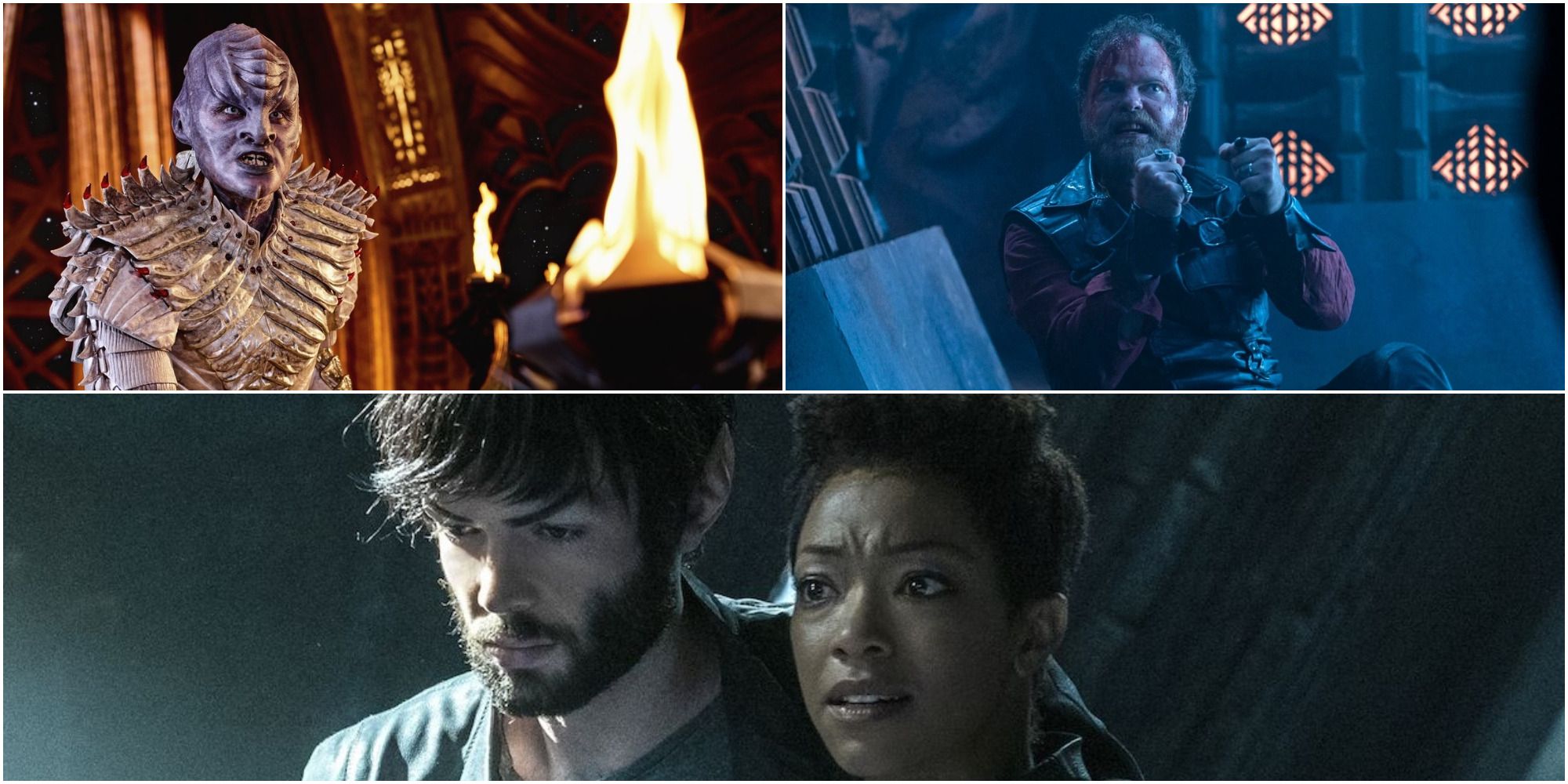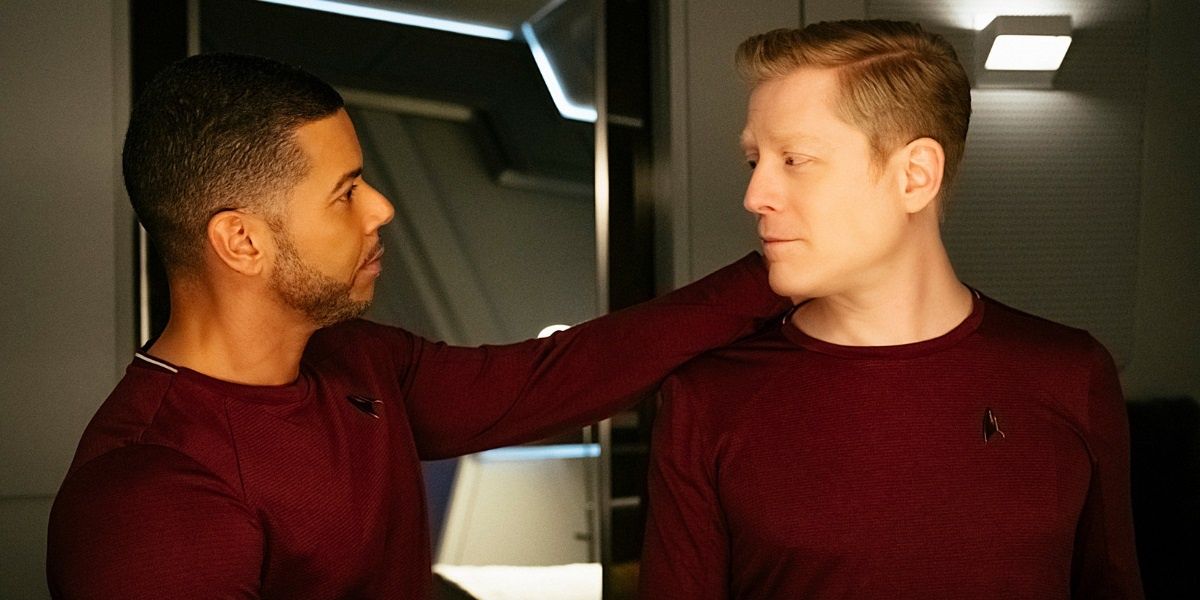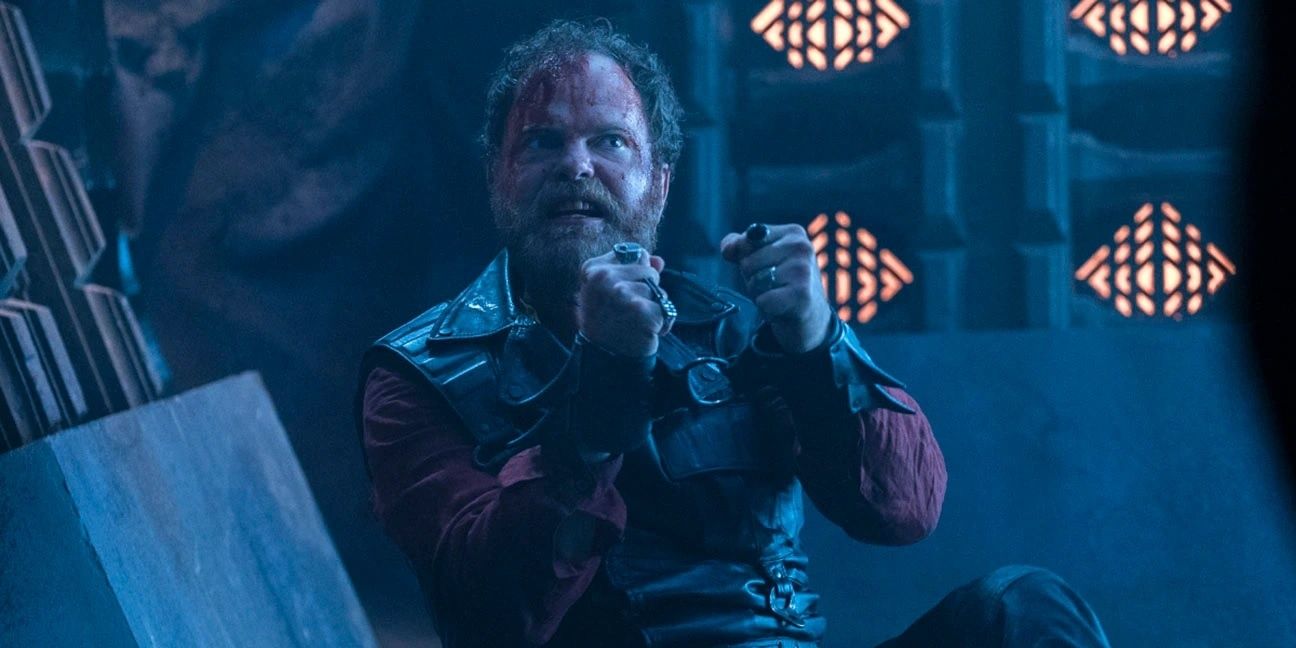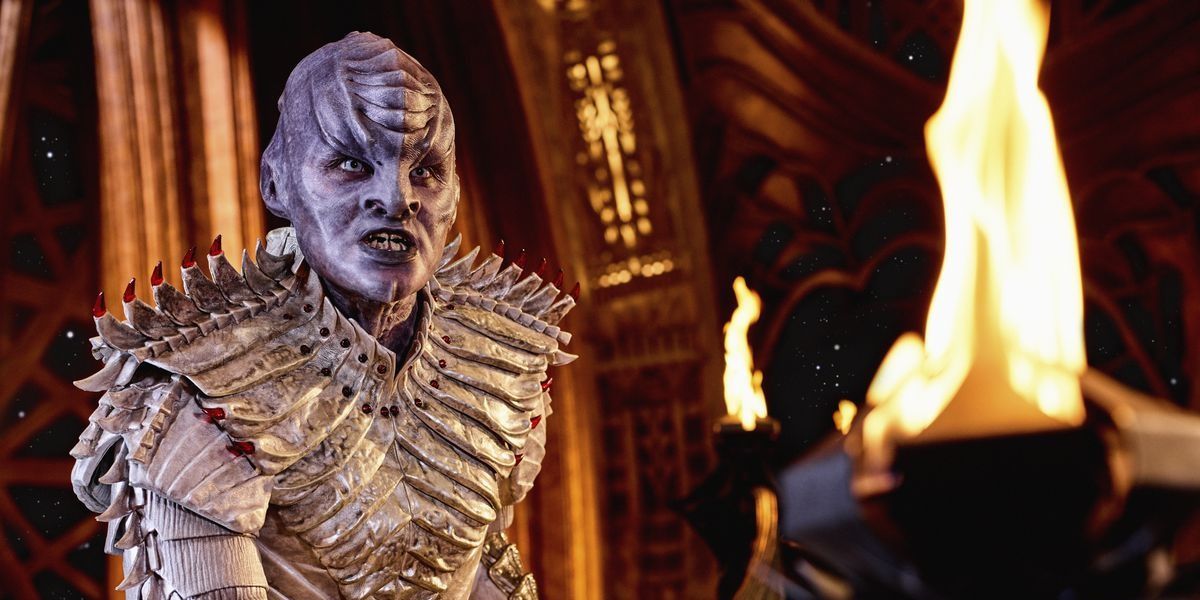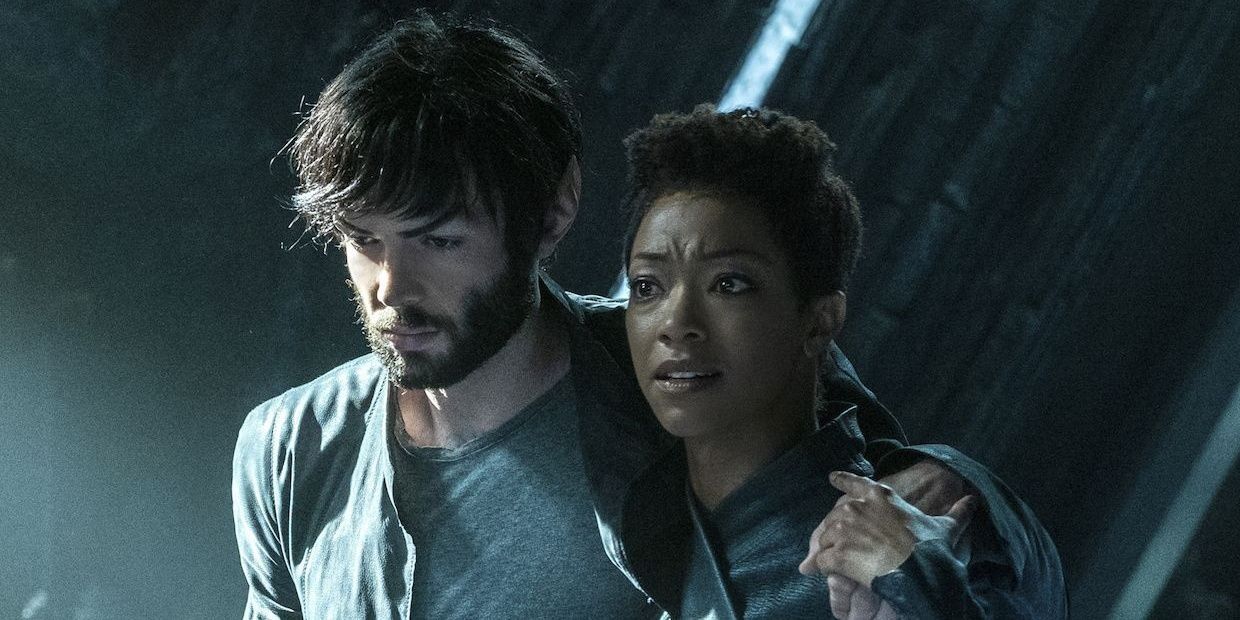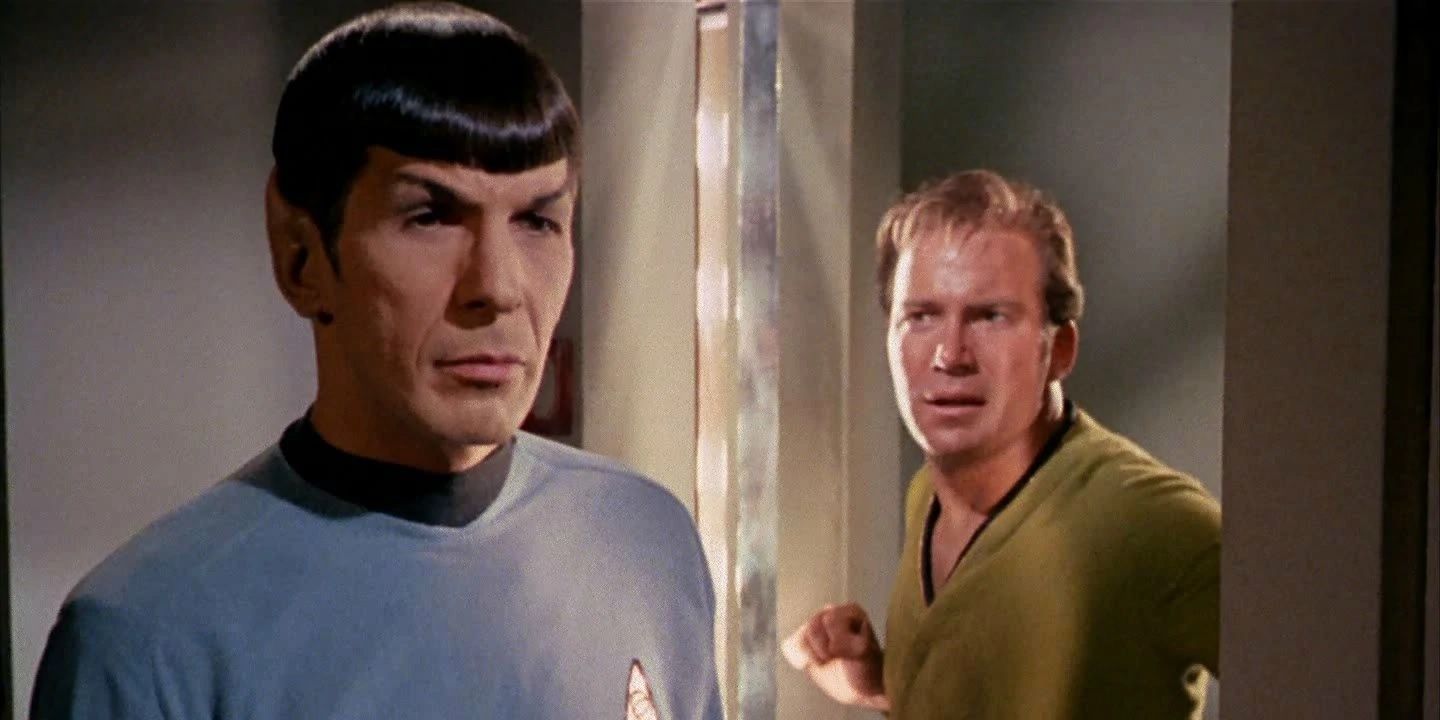Star Trek has been used to dry spells since the gulf between the Original Series and the first movie. But while J.J Abrams brought the franchise back to the cinema at that time, there was nothing on the small screens beyond reruns of the old shows.
Then, in 2017, Star Trek: Discovery made its debut. Set between Enterprise and the Original Series, the show has its fans and foes alike. Sure, it’s got those flashy, new HD sets and effects, and a host of new characters. But Trekkies and Trekkers are famous for their attention to detail. These are five retcons Discovery made that got Star Trek fans buzzing one way or the other.
5 The Return Of Culber
One of the more positive moments in Star Trek: Discovery was introducing the franchise’s first openly gay couple in science officer Paul Stamets and ship doctor Hugh Culber. Aside from hitting that milestone, they were also written well as characters. They had more going for them than simply just "the gay crew members." Their sexuality and relationship were just two of many facets the characters had in their repertoire.
Unfortunately, Culber was killed off within the first season. Needless to say, this move caused criticism after it got off to such a good start. So, by the second season, the show revealed Culber wasn’t dead. His mind was just trapped inside the mycelial network. One new reconstructed body later, and Culber was back! His return was even built up organically, with the rebuilding of his relationship with Stamets going back to the status quo. So, shaky as it was, Discovery managed to bounce back from this.
4 Harry Mudd: Trafficker, Con Artist…And Murderer
Harcourt ‘Harry’ Fenton Mudd was one of the more interesting villains back in the Original Series. He was an out-and-out scumbag, with smuggling, counterfeiting, and abducting women to sell elsewhere. But original actor Roger C. Carmel played him with the kind of sleazy charm that made viewers want to see him more often. Preferably while getting the whole bookcase thrown at him. He was a good source of catharsis.
So, the Discovery episode "Magic to Make the Sanest Man Go Mad" caused a stir when Mudd (now played by Rainn Wilson) causes a time-loop that repeatedly destroys the titular ship and its crew over and over. Mudd just wanted to know how the Discovery worked but showed no hesitation in being willing to kill to get ahead. For many, a scumbag continuing to be a scumbag wasn’t exactly a dramatic 180°-character shift. While others thought it was a step too far. He's a trafficker, not a monster! Though nothing is saying he isn't both of those things.
3 The New Klingons
The Klingons were the Federation’s most famous foes for the Original Series up until a kind of peace was arranged in time for The Next Generation. With Discovery set in the past, it was expected that the Klingons would go back to being antagonists. Fans were unsure about the show placing a Federation-Klingon war just a decade or so before Kirk & co. took the Enterprise for a spin. But what really rustled them was their new look. The original Klingons were hairy, tanned Russian proxies with smooth foreheads. It wasn’t until the first movie onwards that they got their familiar forehead ridges.
In Discovery, they got the biggest, most ridged foreheads in the franchise’s run, with nary a follicle on the rest of their scalp. Why was their look so wild in a time when they were supposed to be mild? Sources say the Smooth Klingons was due to a viral infection that they don’t talk to outsiders about, while the Discovery Klingons was due to them living in isolation from the rest and developing differently. Either way, it’s taken a while for fans to warm up to the new Klingons, and some never did.
2 Burnham & Spock: Foster Siblings
The term ‘Mary Sue’ was infamously created by one of the oldest Star Trek fanfics, where the author of the same name put themselves in the story and became instantly beloved by Kirk, Spock, and everyone else in the show. Hence, the term has been used to criticize any character who the viewer thinks is ‘forced’ into a likable, strong, etc. role. Discovery’s captain, Michael Burnham Jr, has had this term thrown at her for one reason or another.
Most notably for her backstory, where she was brought up by Sarek on Vulcan after her parents were killed. She grew up alongside Spock and even listened to bedtime stories with him as kids. Sarek even briefly considered sending her to the Vulcan Space Academy before settling on Spock, which he famously rejected in favor of going to Starfleet. Why didn’t Spock or Sarek mention their foster human sibling before? Well, that’s where the next entry comes in.
1 Spock Knew About The Mirror Universe Before The Original Series
In Season 2, Spock wiped all records of his foster sister and the Discovery from Starfleet records when she and the crew went off into the future. So, fans had an explanation for why no one in the Federation knew anything about Burnham and her crew after that point. Except, Spock still knew. He could be as cagey as he liked with his personal life. Though one would’ve thought he’d let slip something handy when he and the Enterprise came across the Mirror Universe.
His sister and the Discovery crew ended up stuck there for a few episodes, and even brought back a souvenir in Michelle Yeoh’s Phillipa Georgiou. Then again, Spock was rather calm, collected, and direct in the Original show’s Mirror-verse debut. Instead of that just being his usual Vulcan self, maybe he was working from what Burnham did in Discovery. So, not only did Spock’s record-wipe retroactively change the continuity, but it also retroactively changed the context of one of the show’s most famous episodes. Fascinating.

